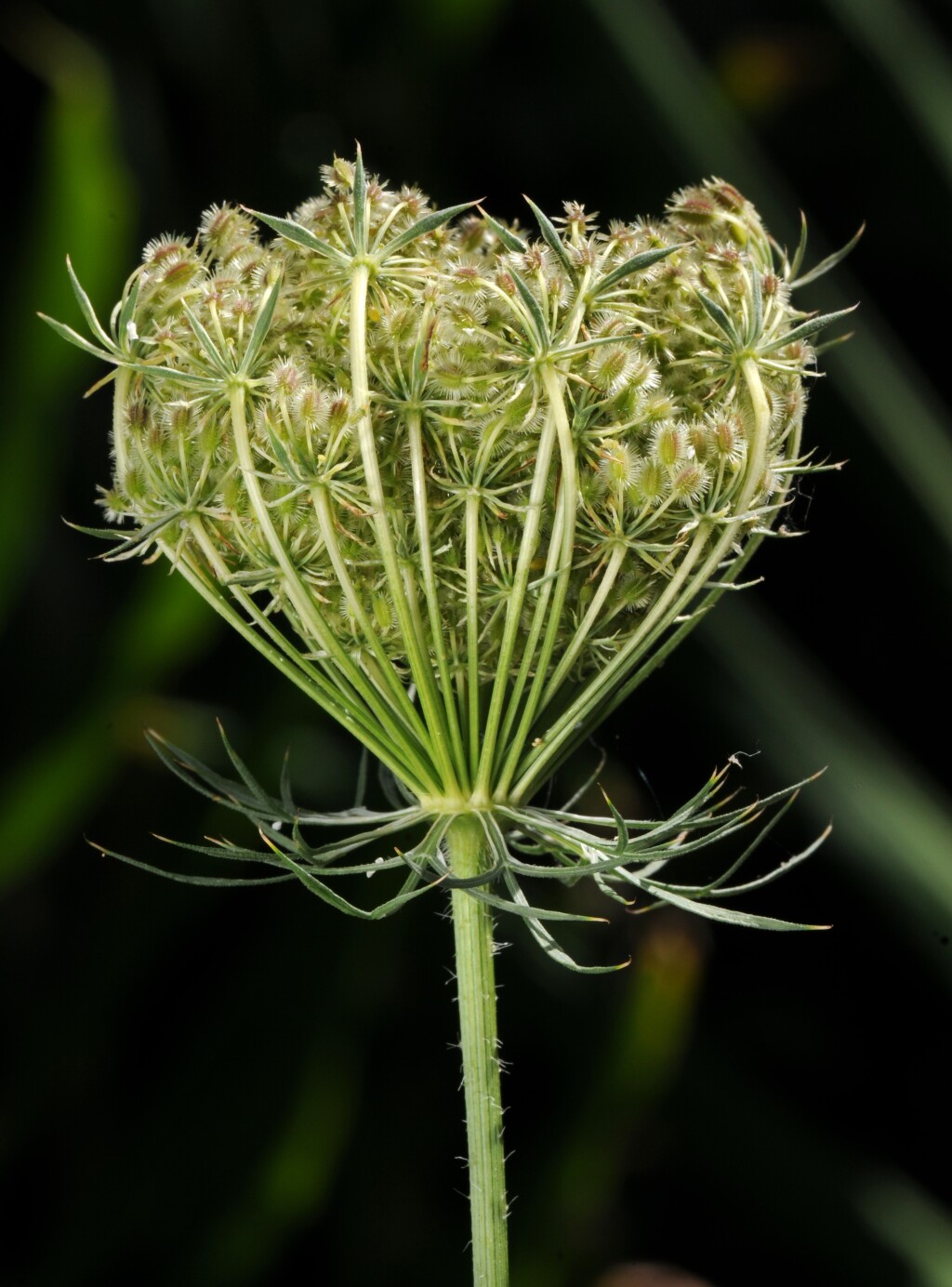Daucus carota
L. CarrotErect biennial, (10–)30–150 cm high, hispid especially on primary stems; stems striate. Leaves 2–3-pinnate, lamina to 28 cm long; ultimate segments ovate to lanceolate or linear, c. 1 cm long; petiole of lower leaves shorter than lamina, base sheathing. Umbels c. flat-topped in flower, 4–10 cm diam.; rays 30–60, becoming rigid and incurved in fruit; umbellules to 25-flowered, outer flowers yellow or white or pink, c. 2.5 mm diam., inner flowers sterile and black or purple; involucral bracts 7–13, pinnatifid, often shorter than rays; involucral bracteoles linear, entire or trifid. Petals c. 1 mm long. Fruit ovoid, 2–4 mm long; primary ribs with a row of short hairs; secondary ribs with straight spines, only apical spines barbellate. Flowers mainly spring–autumn (smaller flowering plants sometimes seen in winter).
Wim, GleP, VVP, VRiv, GipP, OtP, WaP, Gold, CVU, DunT, EGL, EGU, HSF, HNF, Strz. Naturalized all States except NT. Native to Eurasia and northern Africa. Escaped from cultivation; in Victoria, locally common in disturbed areas (roadsides, near watercourses etc.), usually on moist fertile soils. .
Duretto, M.F. (1999). Apiaceae. In: Walsh, N.G.; Entwisle, T.J., Flora of Victoria Vol. 4, Cornaceae to Asteraceae, pp. 256–258. Inkata Press, Melbourne.
 Spinning
Spinning



